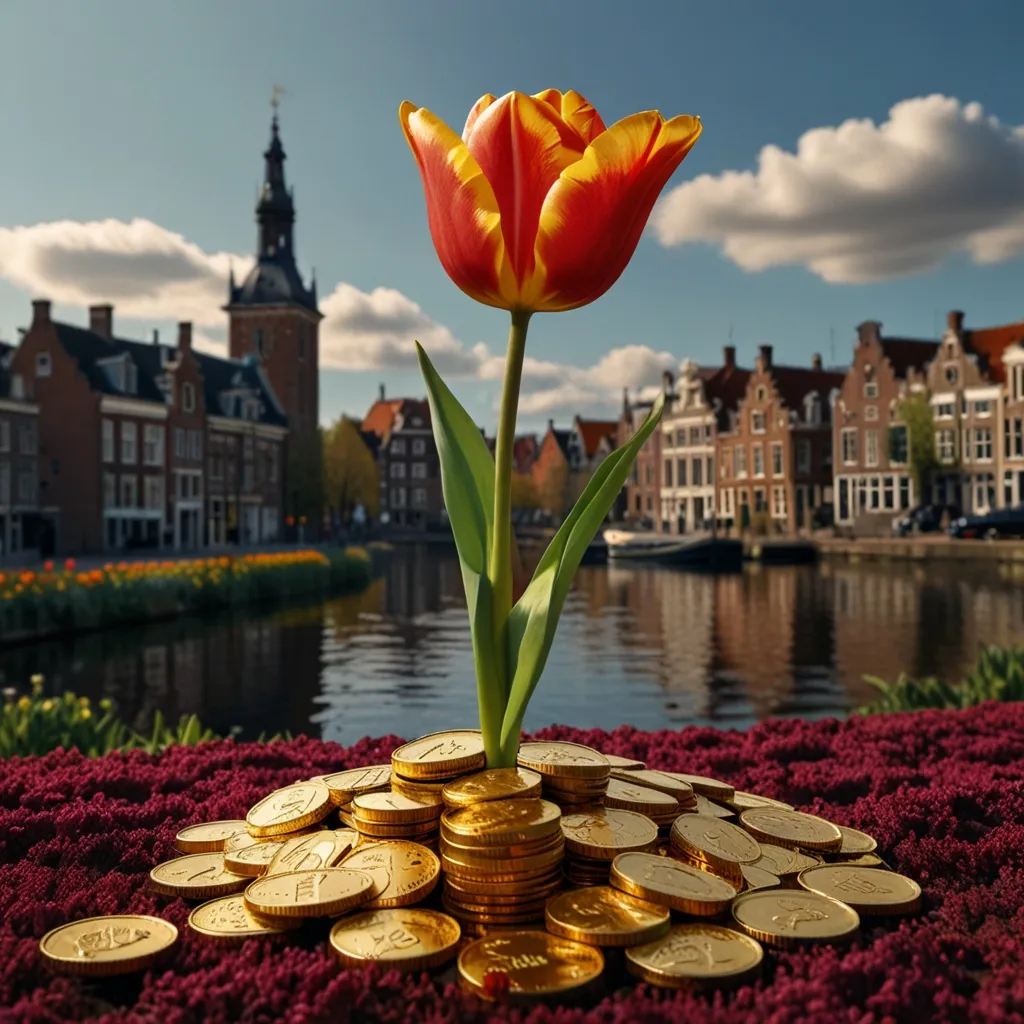Imagine a world where one little flower is worth more than gold, mansions, or even luxury cars. Believe it or not, such a world once existed back in the 1600s. The story of how this precious flower, the tulip, became the hottest commodity is famously known as the Dutch Tulip Mania.
Alright, picture this – it’s the 1630s and the Netherlands is living its best life. Wealth is flowing, trade is booming, and people are living large. Then, out of nowhere, an obsession with tulips takes over the nation. These colorful blooms become the ultimate status symbol, causing their prices to hit the roof.
So, why did these prosperous Dutch folks go so wild over tulips? Let’s rewind a bit. Tulips made their European debut in the late 16th century, brought over from the Ottoman Empire. The Dutch fell head over heels for them. As demand grew, so did their prices. The flower market wasn’t just about pretty petals – rare varieties cranked up the craze even more.
Professional florists saw dollar signs and started hyping up the tulip frenzy, pushing prices higher. And you know how it goes – the more expensive something gets, the more the rich and powerful want in on the action. Tulips soon became the ultimate treasure, symbolizing wealth and prestige.
At the peak of this tulip storm, one single tulip bulb could go for an insane 6,000 guilders, which would be roughly 2 million dollars today. People lost their minds. They sold everything, mortgaged their homes, and chased after these bulbs, believing they’d always rise in value and bring in fortunes. It was basically the 17th-century version of FOMO – Fear of Missing Out.
The psychology behind this madness? A mix of greed, social status, and the irresistible lure of quick riches. Stories of ordinary folks turning into overnight millionaires spread like wildfire, feeding the frenzy even more. This classic case of the “greater fool theory” had everyone thinking that someone else would always pay more for their tulips.
Then came an even wilder twist. A new form of trading called the Tulip Futures Market emerged. Instead of trading actual bulbs, people started buying and selling contracts for future tulip deliveries. This speculative trading fanned the flames of the tulip craze further, inflating the bubble beyond belief.
The media played its part too. Newspapers and pamphlets, along with word of mouth, spread the tulip fever across the country. Stories of people making fortunes overnight created a sense of urgency that made everyone want to jump in. Meanwhile, the Dutch government was busy twiddling their thumbs, not paying enough attention or rolling out smart regulations.
Then, just like that, in February 1637, the bubble burst. Tulip prices crashed, and buyers disappeared. It was tragic. People saw their life savings vanish in a flash, all because of the hype and fear of missing out.
When the tulip market collapsed, the government tried to step in, but it was too late. The damage was done. The economic fallout was harsh, leaving many destitute. The once-wealthy Netherlands took a major hit, and their reputation as a financial powerhouse was tarnished. The ripples of this crash were felt for years.
So why does this story matter today? Well, because the Dutch Tulip Mania and many modern financial bubbles share the same roots – human emotions. The same way people were driven to madness over tulips centuries ago, similar mindsets fuel today’s speculative bubbles. The lesson here is timeless: be cautious, do your research, and don’t fall for get-rich-quick schemes. If something seems too good to be true, it probably is.
The Tulip Mania teaches us to stay grounded and avoid the traps of greed and speculation. A bit of financial education can go a long way in making smarter decisions.
But wait, let’s circle back to tulips for a minute. Was all that hype for nothing? Not entirely. Despite the chaos, tulips became an enduring symbol of the Netherlands. Today, the country is one of the world’s top tulip bulb exporters, and its stunning tulip fields and festivals attract visitors from around the globe.
The Tulip Mania also left its mark on art. That era gave us a treasure trove of tulip paintings still cherished today. The story fascinated writers, filmmakers, and artists, inspiring novels, plays, movies, and documentaries. So, it’s safe to say the tulip craze wasn’t all in vain.
In the end, the Tulip Mania is a very human story – one filled with dreams, aspirations, and fears. It’s a reminder that while we might stumble and make mistakes, we can always learn and grow from them.






